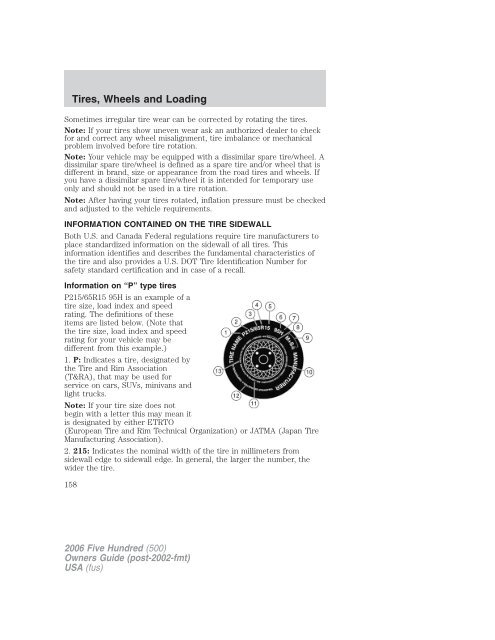Spare tires are not always included with the purchase of a brand new car, but their importance makes them a necessary addition to the essential on-road equipment. Because it’s seldom used, spare tires spend years beneath the carpeting of the trunk or attached to the vehicle’s undercarriage, slowly deflating over time. By the time you need it, it might already be deflated beyond the point of usability, defeating its purpose.
In this guide, I’ll teach you what the standard spare tire air pressure should be, and ways to refill it on the road. So stick around and learn a few useful tricks that will certainly pay off at some point!
Space saver spare tires have to be filled with much more air than standard, full-sized tires. The smaller dimensions, especially the contact surface are the reason why spare tires need more air. The best way to find the exact pressure needed for your spare tire is to check the markings on it. If you have never used it, you’ll find a piece of paper with useful information attached to the tire.
Alternatively, you can take the dimensions of the tire and search for appropriate tire pressure. You don’t need the entire specification, just the three dimensions. Here’s an example of what it looks like: 225/70 R 16.
The first, triple-digit number tells you the width of the tire while the second is for the aspect ratio. The letter R is for radial construction, which is the widespread standard, while the last two-digit number tells you the rim diameter. They’re followed by an additional load index, which is important for full-sized tires, but not as much for spare tires.
Another way of figuring out tire pressure is to open the driver’s door and look at the plate located on the B-column (column between driver and rear passenger door). This plate can also be found on the inside of the gas cap. It illustrates different use scenarios and tire pressures you should use. Spare tire information isn’t always there, but it’s worth check as it only takes a second.
It illustrates different use scenarios and tire pressures you should use. Spare tire information isn’t always there, but it’s worth check as it only takes a second.
Real quick... we can help you save money on auto insurance.
Take a minute to compare quotes and save. It's 100% FREE!
In general, space saver tires are pressurized to 60 PSI or 4 BAR. This might seem like a lot, but as previously explained, smaller tires need higher pressure to keep up with the weight. To put it in perspective, the slim tires used on professional bicycles can go as high as 130 PSI! If you were to pressurize a space-saver to the levels used by full-sized tires, you’d risk wheel damage
Full-sized spare tires are typically included with trucks, SUVs, and other heavier vehicles as they need to endure the extra load. If your vehicle didn’t come with a spare tire, and you’ve got room in the trunk to spare, buying a steel-rimmed wheel and an extra tire is a great way to solve the problem. If you happen to have two sets of wheels for different seasons, it’s completely okay to use a tire from an alternating set as a backup.
If you happen to have two sets of wheels for different seasons, it’s completely okay to use a tire from an alternating set as a backup.
There’s a distinction between a full-sized spare and a regular tire used as a spare. the actual full-sized spare tire has the right diameter but is not as wide as other tires. It requires somewhere between 30 and 60 PSI, but it’s best to use markings on it to find the actual pressure. To get the best results out of a regular tire used as a spare, apply pressure equal to the amount used for front tires.
There are several methods you can use to get your spare tire pressurized to usable levels. The next time you’re at a gas stop or passing by a tire dealership, you can use their self-service air compressor to refill your spare for free or at a symbolic cost.
If you don’t mind breaking a sweat, a manual foot air pump is one of the cheapest tools at your disposal. It comes with a built-in pressure gauge so you know when to stop.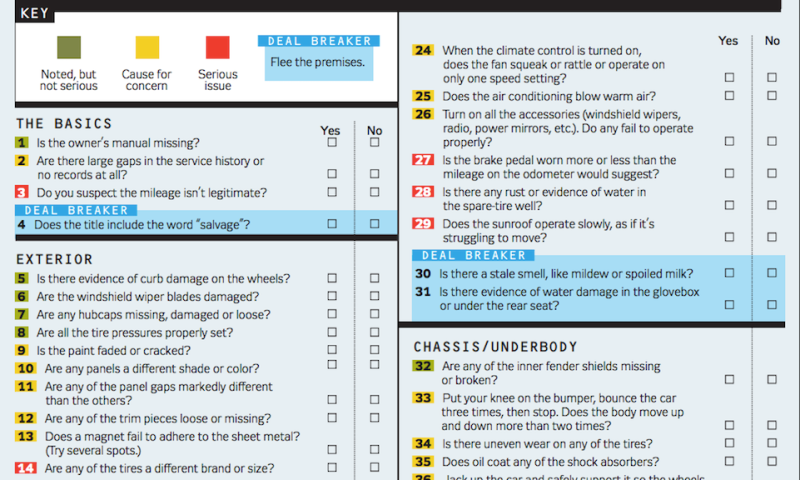
For a marginally higher price, you can get a portable air compressor that uses the power from a 12-volt output or the cigarette lighter port to fill up the tire. I strongly recommend buying a portable air compressor as it is very cheap and will come in handy at some point.
One of the worst-case scenarios when driving is passing over the same tire-piercing object with both the front and back tire. Even if you replace one tire with the spare, you’ve still got one deflated tire left. In those cases, an inexpensive can of tire inflator and sealant will save you a lot of time and hundreds of dollars. With pressure to fill a full-sized tire, you can use it to get back on the road and reach the nearest tire dealer.
The most convenient way of checking the pressure in your spare tire is by using a tire pressure monitor. However, if you already have a manual or electric air pump, attaching it to the tire valve will give you the same results.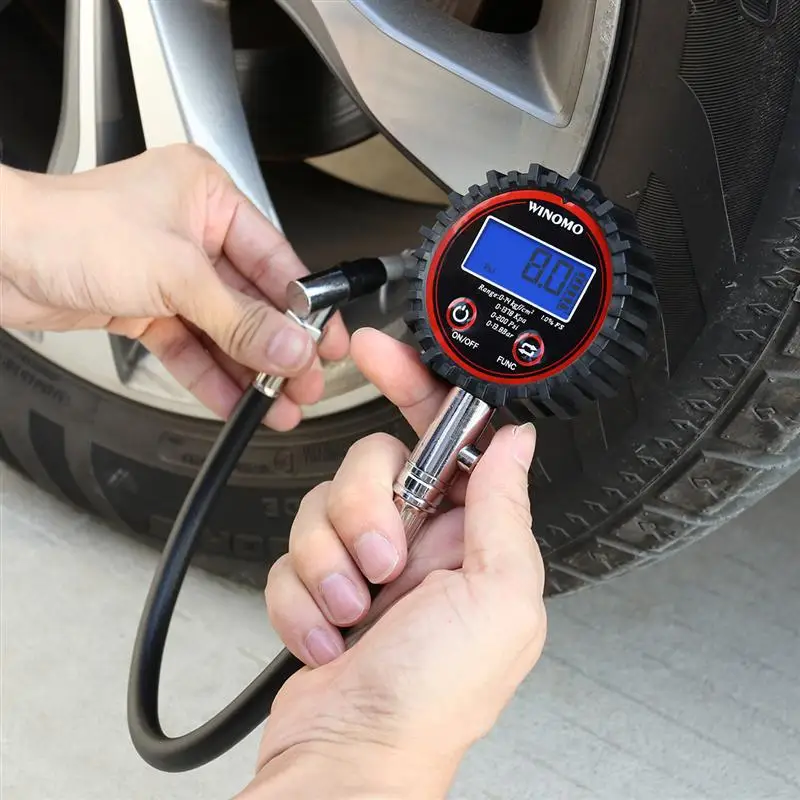
When a vehicle is designed, tires are one of the limiting factors in terms of cornering, braking, accelerating, and enduring high speeds. This is why Formula 1 cars have massive slick tires to harness all that energy and performance. Space-saver tires go in the opposite direction. They sacrifice performance for a decrease in weight and size, which is why you should only use them to get to the nearest tire dealer and never go above 50 mph.
I do not recommend going for the upper limit of your tires, because they are not only affected by heat or cold weather but also high-speed driving and cornering. To be extra safe, pressure your tires to a few PSI below the specified amount.
A full-sized tire should be pressurized to 30 – 40 PSI, but it can endure up to 200 PSI before exploding. However, you should under no circumstances exceed the limit specified by the tire manufacturer, as overpressurizing tires can lead to serious injury, or loss of control while driving.
The space-saver spare tire isn’t built for long-distance travel nor high speeds. The rule of thumb is to drive up to 50 miles without exceeding 50 mph. Go any longer, and you risk damage to the transmission, tire itself, and other components.
If haven’t been using your spare tire, it can last up to eight years, but the storage space will also affect its lifespan. A tire stored inside the trunk can last longer than one mounted underneath the vehicle.
Pressurizing your spare tire is a really simple process and you can even do it for free. With a space-saver tire, keep the pressure around 60 psi, while full-sized spares take the same amount of air as your standard tires. Preparation is key, so always check the condition of your spare tire before a major trip, and keep a portable air compressor and a tire inflator can in the trunk.
You may find these similar articles about tire pressure useful:
Low Tire Pressure Light but Tires Are Fine: Reasons & How to Fix
Where Is The TPMS Reset Button On A Hyundai Elantra?
How To Put Air in Tires Without a Gauge
There are two things to consider when determining how long you can drive on a temporary spare tire.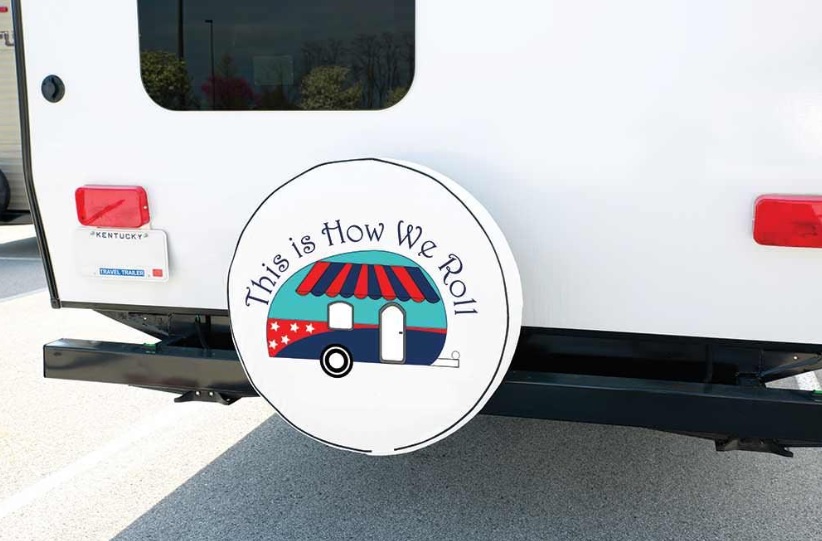 Those factors are distance and speed. You Should NOT drive on a donut for more than 50-70 miles. However, you can stretch this range to 90 miles or so if absolutely needed.
Those factors are distance and speed. You Should NOT drive on a donut for more than 50-70 miles. However, you can stretch this range to 90 miles or so if absolutely needed.
How To Put On a Spare Tire
Extra mileage is not a good idea, these tires are temporary for a reason. You should not attempt to drive long distances on these tires. Temporary spare tires come with such little tread to begin with.
You don’t patch a spare tire for the same reason you don’t patch a solo cup. It’s temporary cheap junk.
Tweet
Temporary spare tires are not designed to take on poor road conditions. They won’t be the same as a normal tire. So, any bump, projectile, or road hazard could cause your donut tire to blow out.
You can use a spare tire more than once. Just remember to check the tires wear conditions and PSI before using. If the tire does not pass the safety check, you should not use the spare tire. This means you need to buy a new tire.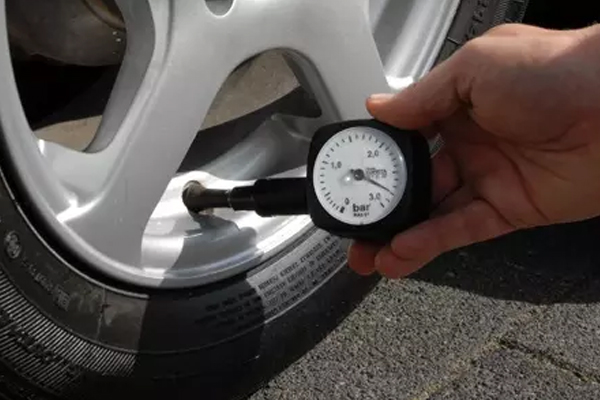
Advertisements
Spare Tire and JackWhat PSI Should a Donut BeUnderstanding what PSI your tire should be at is critical to the safety of you, your car, and your passengers. A tire should be replaced, with a donut, when one of your tires blows out or goes flat.
A donut spare tire should have a pressure of 60 pounds per square inch (PSI). HOWEVER, you should always check your vehicle’s manual to find the correct pressure for your spare tire. Before you put your spare tire on your car or truck, there are a few things you need to check.
Digital Tire Pressure Gauge
Designed to maintain correct tire pressure, reduce tire wear and extend tire life; Digital display reading instantly and clearly being shown, no longer do the guesswork of analog gauges!
Buy Now
First and foremost, check your donuts air pressure. If your temporary spare tire is under inflated it is important to pump more air into it before driving off. It is important to keep a portable tire inflator in your vehicle’s trunk or car storage areas at all times in case of emergencies.
It is important to keep a portable tire inflator in your vehicle’s trunk or car storage areas at all times in case of emergencies.
Another important safety factor that you need to take into consideration when replacing your tire with your temporary spare, is your other tires sizes. If your tires are not factory or stock, your donut tire may not allow your car to ride properly if installed with your new aftermarket wheels. It is always best practice to get a new spare tire if you upgrade your wheels.
How Fast Can You Drive on a Spare TireThe second factor of safety to take into consideration when replacing a flat tire is the speed your spare tire can handle. How fast you drive on a temporary spare tire depends on your particular spare tire’s ratings. As a general rule of thumb you should never travel over 50 miles per hour (MPH) on your donut tire. It is best to avoid the freeway, to keep your speed down. Traveling at a speed greater than 50 MPH could cause further damage to your car or truck.
Life is fast. Are you living for what matters?
Tweet
When regarding load capacity, speed capability, or all-weather traction, temporary tires are NOT designed the same as a normal tire. It is very important to check your vehicle’s owner’s manual and/or the temporary spare’s sidewall for instructions on proper use. This simple preventative measure could prevent a wreck, severe injury, or even death.
Your vehicles braking, handling, and cornering characteristics are going to decrease when driving on a donut tire. The donut tire will decrease your vehicle’s braking and handling due to that fact that it is smaller in size when compared to your other tires.
Additionally, your vehicle leans to or dips in the direction that the donut tire is. With this in mind, your vehicle will tend to pull where the spare tire is located. It is super important to understand what driving on a donut is going to feel/be like before taking off.
How Much is a Spare TireWhen looking to purchase a spare tire, it is important to know the difference between a spare tire and a donut tire/temporary spare tire.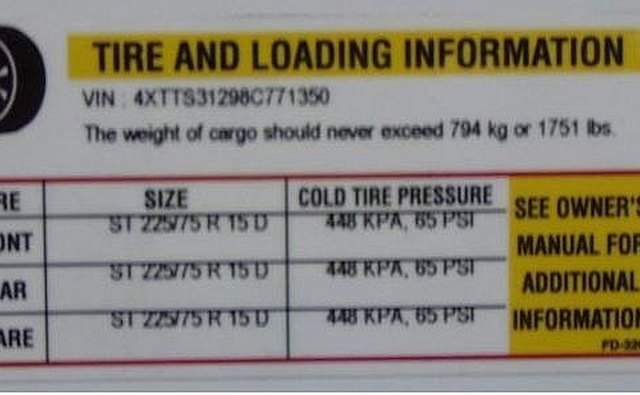
A spare tire is a tire that is identical to the tires that are currently on your vehicle. This means that, that spare tire has the same load capacity, speed capability, or all-weather traction. These spare tires are typically on trucks, jeeps, or larger vehicles.
Unlike a spare tire, God is not a back up plan.
Tweet
A temporary spare tire, aka a donut tire, is a smaller tire. A temporary spare tire provides you with short or temporary means of transportation. These types of tires are usually on/in cars or smaller vehicles.
Now that you know the difference, it’s important to know where to buy the best and cheapest donut or spare tire(s). The answer is, some donut tires can be bought online for as low as $40. These tires are far more expensive at a tire retailer or mechanic shop. Where a spare tire can range dramatically is when it comes to the size and brand.
Can You Fix a Spare Tire?A temporary spare tire can not be fixed or patched and is meant for limited use. The rubber simply isn’t thick enough to hold a plug reliably.
These tires have no belt and little to no tread. Most importantly, these tires are not reinforced. This means that these tires are already “fragile”. Drive on these tires with caution.
The temporary spare tire is simply made to get you to the repair facility you had your new tires shipped to. Find the right tires to ship to your local dealer!
Symptoms of Spare TiresThere aren’t specifically symptoms of a spare tire, more so, there are signs that you need to put on your spare tire. Signs you need to put on your spare tire:
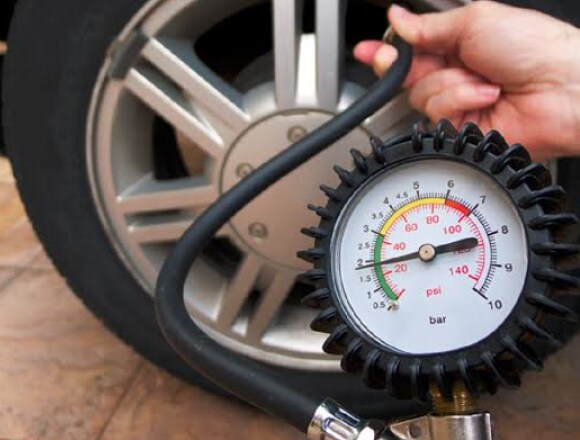
Those who don't already have one should consider investing in it to have more peace of mind while driving.
Most cars people buy today have a spare tire in the trunk. But it's not actually a spare part - it's a temporary tire, also called a donut or banana.
The purpose of this type of replacement is to take the driver and his passengers home or to a tire repair shop so that the temporary wheel can be replaced with a repaired or new one.
When driving on a temporary spare tire, slow down. This is not a complete tire and is not intended to be ridden as a legal tire.
It will be necessary to maintain a speed of 60 kilometers per hour or less. Since it is impossible to go beyond this limit, this means that it is recommended to drive the spare tire on the highway strictly in the right lane.
The emergency spare wheel may only be used as a temporary one. If you use the spare tire for too long, there is a high chance that it will fail.
If you use the spare tire for too long, there is a high chance that it will fail.
In fact, you need to use a spare part to drive no more than 50 kilometers. However, before using a replacement, you should check with the manufacturer for the recommended mileage - it can be more or less.
This information can be found by checking the vehicle owner's manual. There you can find a specific figure for the correct pressure for the spare tire.
In most cases, it should be inflated slightly less than a normal tire. It is recommended to periodically check the pressure in the tires so as not to try to use a spare tire with a low pressure, which can lead to various unpleasant consequences.
Before a long trip, make sure you have a spare tire in the boot that is always ready to go so you don't get stuck half way. Nowadays, you can contact almost any auto repair shop with questions or help with installing a spare wheel.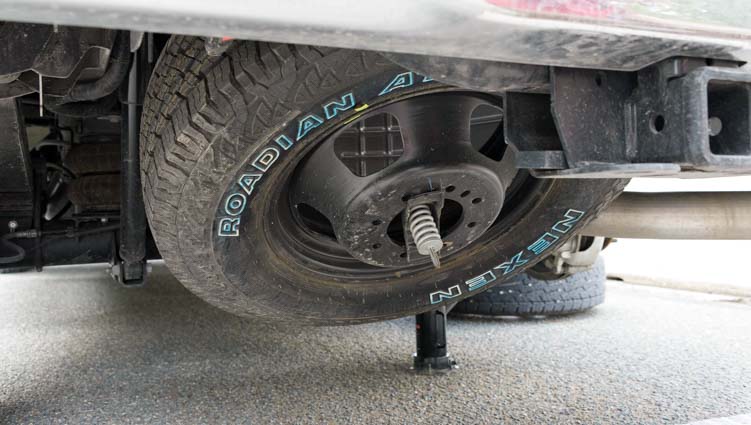
Almost everyone has a banana (or a full size spare).
We all constantly (periodically) check the pressure in the front and rear tires.
Looked at a new tire shop.
Why a new one?
Yes, the answer is simple.
They have new pressure gauges that have recently been calibrated.
Well, the installer checked the pressure, pumped it up.
At that time I was pulling everything out of the trunk.
He looks at me in surprise - like why?
I told him - then)))
Please, I say dear - now check the pressure in the spare tire.
Checked.
And what turned out - instead of 4, 2 was 2.1!
That is two times less! And you won't see it right away.
Imagine - the tire always bursts at the most inopportune moment. And you also have a spare tire downloaded (by the way, you won’t see it right away)
The specificity of a spare wheel is such that the driver rarely thinks about his well-being before an urgent need arises for him.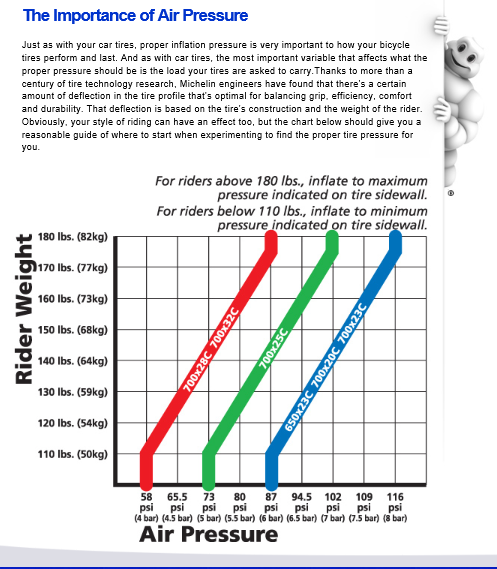 The discovery of a spare tire that bled air in the absence of a pump increases the amount of body movements necessary to restore the mobility of a car by an order of magnitude (especially away from busy roads).
The discovery of a spare tire that bled air in the absence of a pump increases the amount of body movements necessary to restore the mobility of a car by an order of magnitude (especially away from busy roads).
The spare wheel is slowly becoming a thing of the past. As before, a significant part of drivers, especially those who cover long distances during the year, cannot imagine traveling without a “reserve” in the trunk. Only a spare tire gives you the confidence that in the event of a tire puncture, you will be able to continue driving and not get stuck in an unfamiliar place, rely only on the mercy of other drivers or roadside assistance. Such comfort is not offered by a repair kit or even run-flat tires (allowing riding on flat tubes). How great will be your disappointment and surprise when it turns out that the spare tire - the last resort - is completely flat, and therefore further movement is impossible. Tire pressure should be checked and monitored regularly, and the same practice should be applied to the spare wheel.
Spare tire pressure does not need to be checked as often as for road wheels. It is worth taking periodic measurements every few months. Removing the spare tire and reinstalling it in the trunk (or in the case of some vehicles, under the chassis) can be difficult. Therefore, to check the pressure level, it is best to use a manual pressure gauge, which will quickly and conveniently diagnose the condition of your spare tire. Some pressure gauges are so small that they can even be worn as a keychain. Regardless of which option you choose, it is important that such a device is in every car.
Compact tire pressure gauge
Refer to the owner's manual for the correct spare tire pressure. It should be borne in mind that in the case of a "stowaway" these values will be different than for a full-size spare wheel. The pressure level in the second case should be the same as for the rest of the wheels in the car.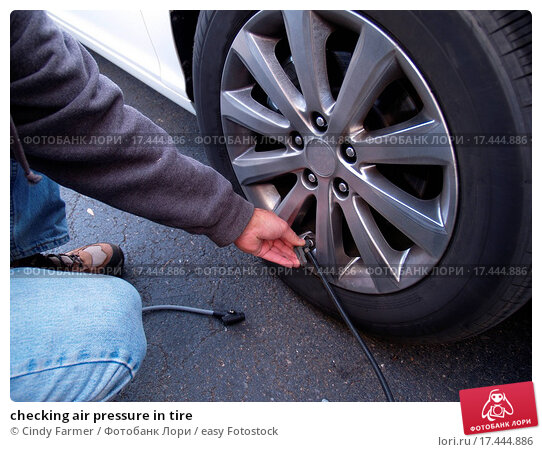 Thus, you should refer to the tire pressure chart, located most often on the inside of the car's side pillar or on the inside of the filler hatch. The need for a spare tire can never be assumed, and the pressure can always be easily reduced. In the case of rolling back, experts most often recommend a high level of pressure - at the level of 4.2 bar - due to the narrow tire of such a wheel.
Thus, you should refer to the tire pressure chart, located most often on the inside of the car's side pillar or on the inside of the filler hatch. The need for a spare tire can never be assumed, and the pressure can always be easily reduced. In the case of rolling back, experts most often recommend a high level of pressure - at the level of 4.2 bar - due to the narrow tire of such a wheel.
A handy solution to supplement the spare tire pressure is the small cigarette lighter powered car compressors. Such a device is easy to use and does not require a lot of space in the car. So they can successfully serve as a permanent piece of equipment, which allows you to pump up the wheels at any time. By far the cheapest handy tool for refilling pressure is the traditional car pump, although its use requires removing the wheel from the trunk. And this is often what you want to avoid. Then it makes sense to use the compressor at a gas station or seek help from service stations.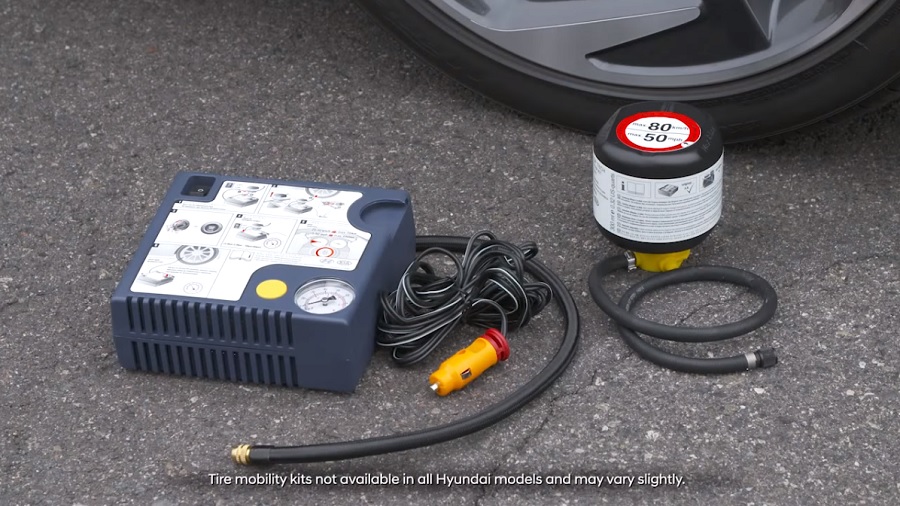
Tangled courtyards around a colony on the outskirts of the city, documents for an auction for the supply of meat and 7 minutes to get them to the checkpoint. And at this moment I hook the metal pin with the wheel, the rubber instantly falls off, I leave the car and run with the documents to the entrance to the colony. Everything worked out, but instead of a triumph, I had to install a spare wheel, and I only imagined how to put a spare tire. Imagine my surprise when a new, but smaller wheel was found in the trunk. At that moment I did not know yet that it is rare which spare tire matches the standard tires.
A spare wheel is almost always included in new vehicles. And when the owner opens the trunk and looks into the pallet, 4 scenarios await him. Of course, if, like me, they did not pay attention to it in the showroom. There are also cars with a spare wheel in the back.
Of course, if, like me, they did not pay attention to it in the showroom. There are also cars with a spare wheel in the back.
This is a wheel with a smaller diameter tire, usually 1 inch from the main wheels. It cannot be considered a spare in the full sense, it is intended for temporary use in order to get to the nearest tire shop or shop where you can make a tire selection. Disks on the dokatka are usually steel. The whole point of such a wheel is to reduce the cost of completing a car in production. Many people also talk about reducing the weight of the equipped car, but this is a completely uncritical effect.
So, before installation, the pressure is checked in the dokatka. If possible, they pump up more than regular wheels, up to 4-4.2 atmospheres. According to the operating rules, you cannot drive on different diameters, but you can move to the place of repair. Installing a spare tire will take time, and in order to shorten it, it is good to store the stowage assembled and already inflated.
Has the same tire as the vehicle itself. The disk can be simpler, the so-called basin or pan. If the rest of the wheels are cast, then it is also not recommended to use the spare wheel “on steel” for a long time. Different weight load on the axle, uneven running gear wear. What spare tire is suitable for constant driving? Only a full-fledged fifth wheel identical to the rest, and in two versions - winter and summer.
This is designed to quickly repair a punctured wheel, but will not help with significant damage. It is the case when it is better to play it safe - you still need an independent selection of tires. Spare wheel discs can be used the cheapest.
Installing this spare tire, mainly on luxury cars, they do not need spares. The composition of the rubber and the design of the cord are such that they allow the car to drive before repair even with a flat tire: the tire will not fall off, the grip will remain.
If there is a space for storing a spare wheel in a special compartment in the trunk, on the roof or on the tailgate, then it must be included in the package of a new car. Used cars can be in a different condition, but they usually have a spare tire available. What should be the spare wheel so that it can be used as quickly as possible?
1. Existing. That is, in principle, it should be. There are drivers who do not even know what kind of spare tire is in their car and whether it is at all. Nevertheless, informed means armed, everyone knows this.
2. Pumped up. It is recommended to check the pressure in it monthly along with the diagnostics of standard wheels. Or carry a compressor with you, then installing a spare tire will take more time, but you will have enough of your strength.
3. Whole. Talk about the wear of the spare wheel from friction in the trunk, of course, causes a smile. But if you already have a used car, then the shelf life affects the integrity of the tire.